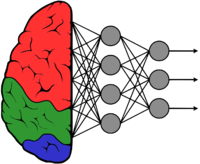GstInference with InceptionV4 layer
Make sure you also check GstInference's companion project: R2Inference |
Contents
Description
Inception v4 is a deep convolutional network architecture that has been shown to achieve very good performance at a relatively low computational cost. Its performance is similar to the latest generation Inception-v3 network, but it adds residual connections in conjunction with more traditional architecture.
Architecture
The network uses Inception v3 as a base but incorporates residual connections.

Gstreamer Plugin
The GStreamer plugin uses the pre-process and post-process described in the original paper. Please take into consideration that not all deep neural networks are trained the same even if they use the same model architecture. If the model is trained differently, details like label ordering, input dimensions, and color normalization can change.
This element was based on the ncappzoo repo. The pre-trained model used to test the element may be downloaded from our R2I Model Zoo for the different frameworks.
Pre-process
Input parameters:
- Input size: 229 x 229
- RGB Mean: [128, 128, 128]
- RGB Standard deviation: [128, 128, 128]
- Format RGB
The pre-process consists of taking the input image and transforming it to the input size (by scaling, interpolation, cropping...). Then the mean is subtracted from each pixel on RGB, and it is divided by the standard deviation. No, no color space conversion is needed because the model was trained with RGB.
Post-process
The model output is a float array of size 1000 containing the probability for each one of the ImageNet labels. The post-process consists of simply searching the highest probability on the array.
Examples
Please refer to the Googlenet section on the examples page.
References
- ↑ Szegedy, Christian, et al. "Inception-v4, inception-resnet and the impact of residual connections on learning." AAAI. Vol. 4. 2017.

